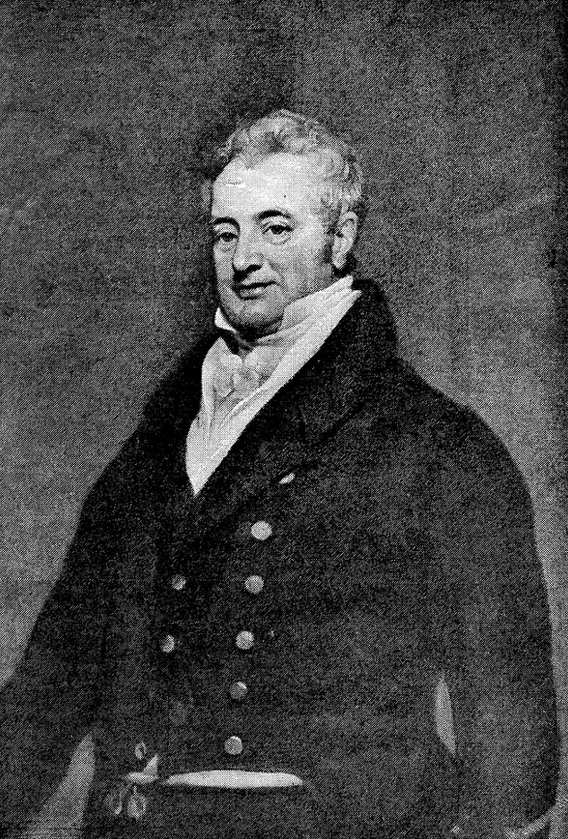
Sampson Hanbury m. ? (?-?)
Lloyd H Fox was the half first cousin 4x removed of Sampson
Griselda Bigland was the 3rd cousin 3x removed of Sampson
source:Zythophile
Hanbury, whose family were originally from Monmouthshire, but whose grandfather had moved to London by 1724, setting up as a tobacco importer, was a member of an extensive network of Quaker merchants, bankers and brewers.
His father, Osgood, was a banker in London, his mother Mary was the daughter of Sampson Lloyd of Birmingham, founder of what eventually became Lloyd’s bank; one uncle was David Barclay, the London banker who had led the purchase of Henry Thrale’s brewery in Southwark in 1781, turning it into Barclay Perkins (and who must have had discussions with his nephew about the wisdom of purchasing a rival London porter brewery); his wife, Agatha Gurney, one of the most beautiful women of the time, was from another old Quaker family with banking connections. Both Agatha’s father and brother were partners in Barclay’s Bank in London, and the clan also had a bank in Norwich, led by another of Sampson Hanbury’s uncles, John Gurney. This network was invaluable in helping the brewery’s finances, with Sampson Hanbury taking out regular loans from his relatives’ banks.
While Hanbury ran the business, which changed its name to Truman and Hanbury, Sir Benjamin’s half-French Villebois great-grandsons remained majority owners but, despite their great-grandfather’s wishes, stayed strictly sleeping partners. Trade slipped badly at first, with the Brick Lane brewery falling to fifth place among the London brewers in 1792, selling only 98,000 barrels a year (Whitbread, for comparison, managed to produce more than 170,000 barrels). All the same, the business of a Truman’s pub at the time can be judged by an advertisement in The Times in January 1793 for the sale of the lease of the brewery tap house, the Black Eagle in Brick Lane, opposite the brewery. It was advertised as selling 14 butts of porter a month – 50 gallons a day – with “a considerable consumption for wine, brandy, compounds, &c” as well. As the century neared its end, in 1799, Hanbury had increased sales to 117,000 barrels a year, but Whitbread was still way ahead with more than 200,000 barrels and Barclay Perkins was making 136,000 barrels a year.
Steam power only seems to have arrived at Brick Lane in 1805, 20 years after most of the other big London porter brewers had taken up the new technology, when Hanbury ordered a beam engine from Boulton and Watt of Birmingham, at the same time building a new vat house. An earlier attempt to install a steam engine at the Black Eagle brewery, in 1788, had stalled when the partners failed to find room on the site for the engine house. Mechanical mashing only began in 1814, according to the Victorian journalist John Bickerdyke: before that date each mash was stirred the traditional way, using long oars or mash forks worked by “sturdy Irishmen”.
The year Brick Lane acquired its first steam engine, Hanbury had built his share up in the brewery from 1/18th to a third, after slowly buying more and more shares off the Truman Villebois brothers (two 18ths in 1799, for example), borrowing heavily from the brewery each time he purchased more shares, and paying the money back out of his share of the profits over the next year or two. Eventually, like Benjamin Truman, Hanbury amassed enough of a fortune to purchase a Hertfordshire estate, buying Poles, near Ware, and becoming Master of the local hunt, the Puckeridge Fox Hounds.
In 1808 Hanbury’s nephew, Thomas Fowell Buxton, son of Thomas Fowell Buxton of Earl’s Colne, Essex, and Anna Hanbury, joined the brewery, aged 21 or 22. Buxton (who was not a Quaker, though his wife was) became a partner in 1811, at the age of 25, with a 1/12th share, bringing the last element to what would eventually, by 1827, be called Truman, Hanbury, Buxton and Company. By now the Black Eagle brewery was making 142,179 barrels of beer a year, some 20,000 barrels more than Whitbread, but a long way behind the number two London brewer, Meux Reid in Liquorpond Street, near Clerkenwell, on 220,000 barrels, and trailing Barclay Perkins in Southwark, on 264,405 barrels a year, by a large margin.
Buxton’s wife was one of the Gurneys of the Norwich bank, and a cousin of Sampson’s wife Agatha. A few years after he became a partner, in 1815, the shares in the brewery were redivided into 41 slices, and Buxton, evidently after bringing in some extra capital to the firm, increased his share to 8/41ths. His greatest gift to the brewery was sorting out the management of a concern that, by 1815, owned 200 pubs outright and financed another 300 landlords. But he also successfully intervened to prevent a disaster that might have destroyed the business.